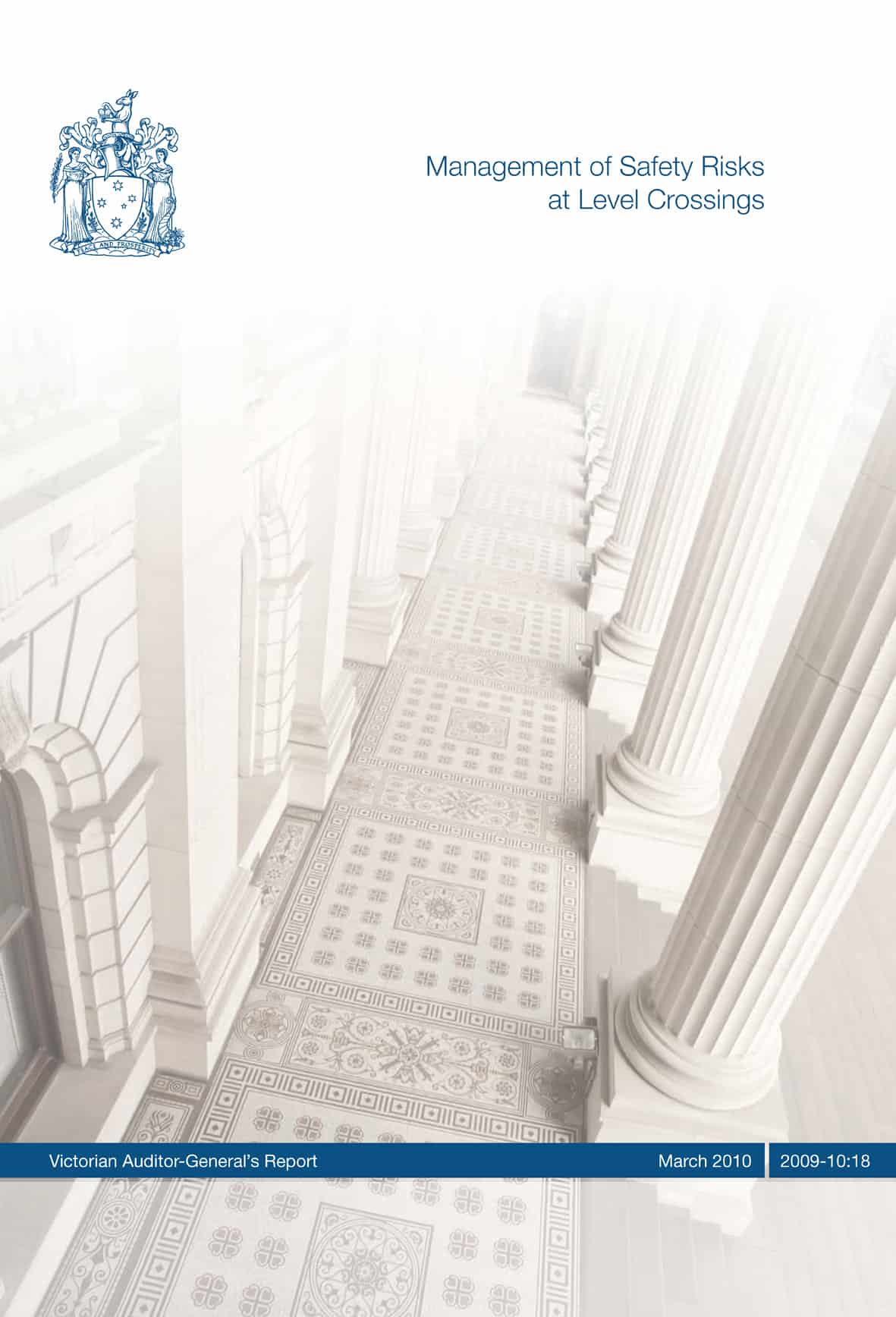 The Victorian Government is likely to say the Auditor-General’s report into “Management of Safety Risks at Level Crossings“, released on 24 March 2010, supports the government’s initiatives. This is true but the report says much more than just describing the State Government’s efforts as “satisfactory”. (If my child’s report card said satisfactory, I would be talking to the teacher about why the performance was only “satisfactory”)
The Victorian Government is likely to say the Auditor-General’s report into “Management of Safety Risks at Level Crossings“, released on 24 March 2010, supports the government’s initiatives. This is true but the report says much more than just describing the State Government’s efforts as “satisfactory”. (If my child’s report card said satisfactory, I would be talking to the teacher about why the performance was only “satisfactory”)
The report summary says the following:
“The rate of progress in improving safety and reducing accidents has been satisfactory. There are, however, elements of the risk management framework and its application that can be improved.”
- “improving how the committee is informed of the views of the rail managers, who run train services and maintain the infrastructure, about their risks and priorities
- assembling information that will allow the committee to effectively manage and monitor the delivery of the Towards Zero strategy
- improving the understanding of what causes level crossing collisions.” [link added]
Clearly the Parliamentary committee is not getting the full risk story from the rail managers. Continue reading “Government can do much better on level crossing safety”
